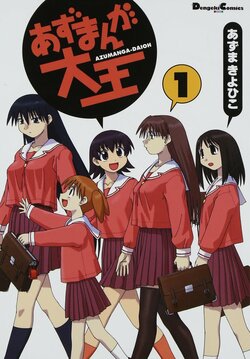Kūki-kei

|
Translation in progress This article is currently being translated from Chinese Moegirlpedia; it may be incomplete, inaccurate or obfuscating. Moegirlpedia hopes that you can help with translating, proofreading, or copy editing this article. Progress:
50% This template was placed on 16:15, 28 August 2024 (UTC). The last edit was on 16:27, 28 August 2024 (UTC). |
Kūki-kei (Japanese:
Introduction
After sekai-kei
After Neon Genesis Evangelion started the third anime boom, the definition of the sekai-kei as "a group of works that directly connect the interpersonal issues of the protagonist (you) and the heroine (me) with grand and abstract issues such as a 'world crisis' or 'the end of the world' without any specific plots in between" for ACG works was proposed and gradually became popular. However, although sekai-kei works have largely focused on the character's personal growth and downplayed the social background, this growth still has the characteristic of connecting the characters' small problems with the world's big problems, and had not yet reached complete "slice-of-life" status. After the development of the sekai-kei, a series of ACG works in which female characters promote the development of slice of life plots gradually increased in the early 21st century, marked by the serialization of Azumanga Daioh in 1999. Subsequently, some blogs on the Japanese internet started calling this style kūki-kei, and the concept of kūki-kei was born. After 2006, kūki-kei works such as Hidamari Sketch, Lucky Star, or K-On! were successively adapted into anime and became successful. The kūki-kei has gradually become an important part of daily works.
Features
Kentaro Komori proposed the following comprehensive features for kūki-kei works.
- The characters are mainly four or five young girls (mainly middle and high school students, occasionally elementary school students).
- There is no working towards a common goal.
- The main character can be sexually bound, but is largely isolated from romance.
- They will describe the families of the main characters, but the work won't be about family drama.
- There is no excessive misfortune and misery.
In addition, kūki-kei also have some other features, such as:
- Creating a "relaxing atmosphere" with relaxing ambient music.
- Emphasis is placed on smoothing out the differences between characters and living in a harmonious way.
Typical works
| Works that conform to kūki-kei characteristics |
|---|
|
| |||||||||||||||||||||||||||||||||||||||||||||||||||||||||||||||||||||||||||||||||||||||||||||||||||||
